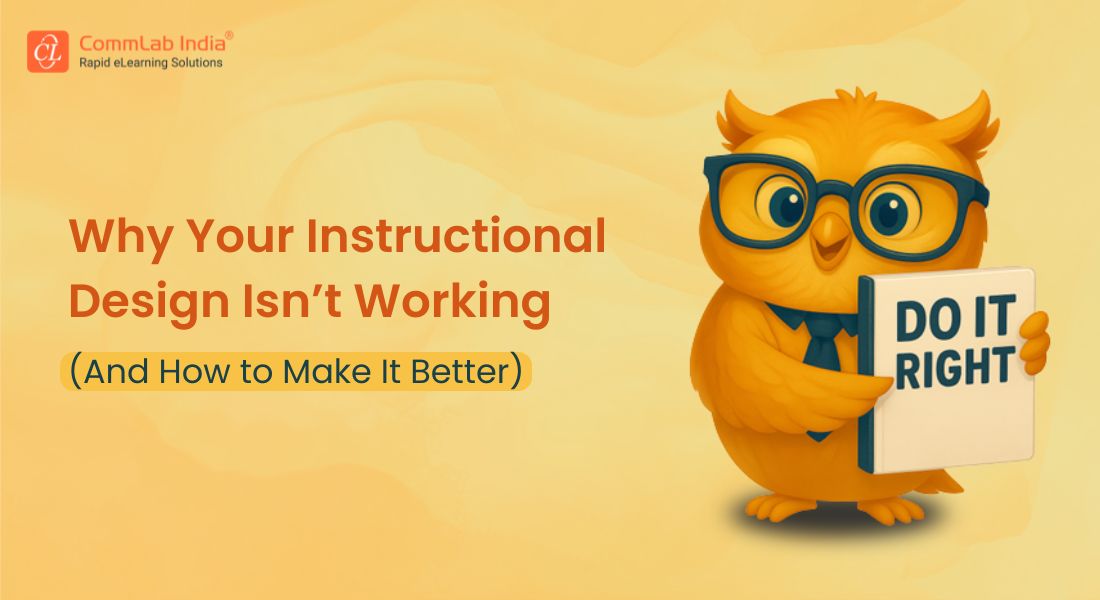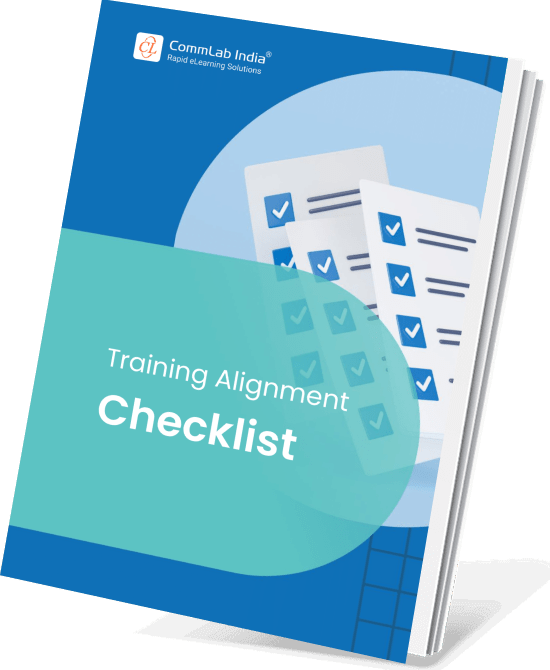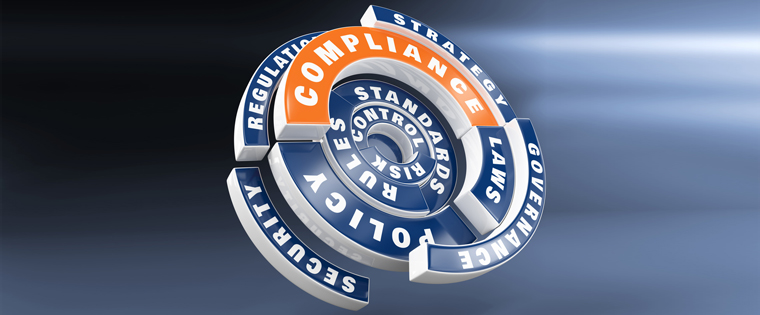Fixing Common Instructional Design Mistakes: A Guide to Getting It Right

They say knowledge is power, but let’s be honest, when it comes to workplace training, simply knowing something isn’t enough. You can’t just throw information at people and expect magic to happen. Training shouldn’t be treated as a quick fix to say, “Yep, we covered that.” It needs to have purpose, depth, and a clear connection to the goals that matter most to your team and organization. Otherwise, what’s the point? You’re just wasting time and resources.
→ Download Now: The Training Alignment Checklist
The real shift happens when corporate training stops being about just transferring knowledge and starts being about driving meaningful results. Think about it, are you teaching people skills they’ll actually apply? Are you measuring the impact of that training on performance, productivity, or growth? By aligning training with outcomes that truly matter, you’re not just investing in your employees; you’re investing in the future of your business. That’s the difference between training that checks a box and training that drives change.
Table Of Content
- How Does Alignment in Instructional Design Impact eLearning Success?
- What are the Common Instructional Design Mistakes and How to Correct Them?
How Does Alignment in Instructional Design Impact eLearning Success?
Why Alignment is Key to Training Success
Training success depends on alignment between learning objectives, content, and assessments. When these elements work together seamlessly, they create streamlined training experiences that effectively build real-world competence.
The success of any training program depends heavily on alignment in instructional design. This means ensuring that your learning objectives, content, and assessments are all working together seamlessly. When these components align, learners are guided through a clear, purposeful journey where every element reinforces the desired outcomes. Misalignment, on the other hand, creates confusion, dilutes the learning experience, and can leave participants unprepared to apply their knowledge or skills in real-world scenarios. Effective instructional design focuses on crafting this harmony to create meaningful, impactful eLearning experiences.
By aligning objectives with content and assessments, instructional designers ensure that every piece of the training serves a purpose. Learning objectives define the goals, the content delivers the knowledge or skills needed to achieve them, and the assessments validate the learner’s progress. This alignment streamlines the learning process, eliminating unnecessary distractions or content that doesn’t support the desired outcomes. Ultimately, it’s about designing eLearning courses that is not just engaging but also practical, equipping learners with the competence and confidence they need to succeed.
What are the Common Instructional Design Mistakes and How to Correct Them?
1. Confusing Learning Objectives
Fix: Use SMART Framework + Condition/Criteria
Too many courses start with goals like “Understand X” or “Be aware of Y.” But here’s the deal: “understand” isn’t something you can see or measure. Swap it out with concrete verbs (like “list,” “demonstrate,” “analyze”) and anchor them in the SMART framework: Specific, Measurable, Achievable, Relevant, and Time-bound. Add the conditions (“Given a product brochure...”) and criteria (“...identify three client objections without error”) to make the objective airtight.
Pro Tip: Always ask— “If I walked in during this training, what would I see someone doing?”
2. Content Creep that Dilutes Impact
Fix: Audit Every Slide/Module for Alignment with Objectives
This one’s sneaky. You start with clean learning objectives, and the next thing you know, slides on company history, extra theories, and pet topics slip in. If it doesn’t tie directly to a stated objective, cut it or move it to a resource section.

3. eLearning Assessments Testing the Wrong Thing
Fix: Use Verbs from Objectives to Design Performance-Based Assessments
If your eLearning course objective says “Demonstrate how to escalate a support ticket,” but your eLearning assessment is a multiple-choice quiz on policy, something’s off. Match the cognitive level of your objectives to the assessment. Use action verbs as your blueprint. Instead of quizzing facts, create performance-based tasks (a simulation, a decision-making scenario, a checklist audit). If you’re testing behavior change, assess behavior, not trivia.
Forbes discusses the shift towards Results-Only Work Environments (ROWE), where employees are evaluated based on outcomes rather than hours worked.
Red Flag: If the learner can pass your test without practicing the skill, revise the eLearning assessment.
4. Training That’s Just a List of Topics
Fix: Apply Backward Design to Tie Content to Behavior and Business Goals
We’ve all seen training become a laundry list of topics (“Cover this… Oh, and this too…”). But backward design flips that. Start with the end behavior: “What should people be doing differently at work?” Then design the learning path that leads there. Anchor it in business outcomes, not just knowledge transfer. That’s how you turn information into transformation.
For example, in compliance training, instead of simply listing regulations and policies, focus on the desired behavior: “How should employees handle sensitive data to ensure compliance?” Build the training around scenarios where employees identify risks and make decisions that align with the regulations.
Client question to ask: “How will you know this training worked—what will you see people doing?”

The Training Alignment Checklist
Aligned Training that Boosts Engagement, Skills, and ROI!
- 15 expert-crafted questions to assess alignment
- Built-in framework to spot gaps
- Quick, actionable tool to catch misalignment
- And more!
5. One-Size-Fits-All Approach (and Reaching No One)
Fix: Customize based on Learner Roles, Regions, and Tech Maturity
We wouldn’t teach new drivers the same way we teach pilots. So why do we treat all employees the same in training? In the manufacturing industry, training a factory floor worker on equipment safety should look different from onboarding corporate-level engineers. Tailor formats, pacing, language, and examples. Use branching, adaptive learning, or role-based learning paths to make the experience feel personal and relevant.
Bonus: Localize beyond just eLearning translation—consider tone, imagery, and even regulatory context.
Discover how eLearning translations can break language barriers and create meaningful connections with learners around the world!
6. Too Many Stakeholders, Not Enough Strategy
Fix: Ground Decisions in Business Goals and Design Principles
Everyone’s got an opinion when it comes to training, especially loud stakeholders. And while their input is important, letting it drive design can derail the learning. Your job is to listen, clarify, and redirect.
Anchor all decisions in two things:
1. The learning objectives, and
2. The business problem you're solving
Frame discussions in terms of ROI and user experience; it keeps everyone focused on the outcome, not personal preferences.

7. Launch the eLearning Course and Forget
Fix: Use Data to Iterate—Look at Usage, Feedback, Assessment Outcomes
Think of your course like software; it’s version 1.0 when it launches. Don’t wait for annual reviews. Monitor Learning Management System (LMS) usage data, survey responses, assessment gaps, and manager feedback. Look for drop-off points or confusion triggers. Iterate fast and often, especially in the first 90 days.
Pro Tip: Create a “feedback dashboard” to track patterns and prioritize fixes.
Next Steps!
At the end of the day, training isn’t just about filling gaps; it’s about paving the way for growth, both for individuals and organizations. When instructional designers focus on building eLearning courses that are sharp, relevant, and results-driven, training becomes a powerful tool for performance.
Remember: Training is only impactful when it’s aligned with your objectives, content, and outcomes. Misalignment can derail even the best efforts, costing time and progress. That’s why we’ve created The Training Alignment Checklist—your go-to resource for ensuring every phase of your training program is on track. With 15 expert-designed questions, a proven framework to spot disconnects, and actionable insights to catch issues early, this checklist empowers you to build training that truly delivers results. Ready to take the guesswork out of alignment? Download the Checklist now and set your training program up for success!







![How to Select the Right LMS Vendor? [Infographic]](https://blog.commlabindia.com/hubfs/blogs/select-right-lms-vendor-process-infographic.jpg)

